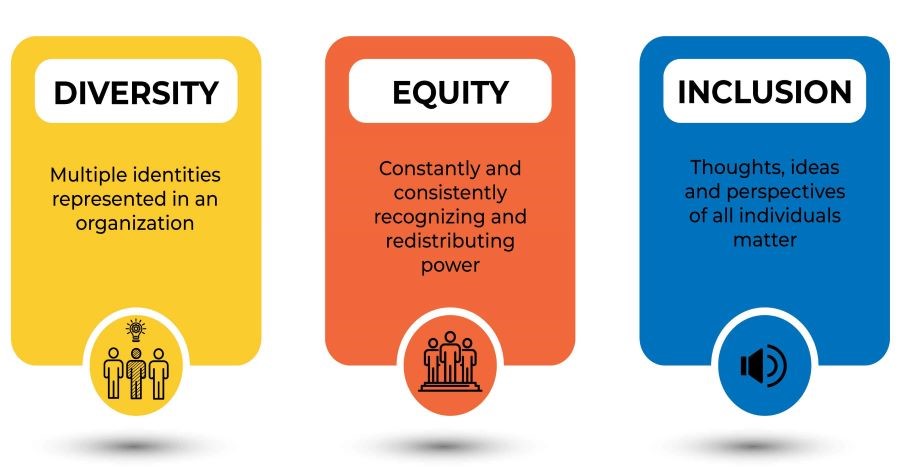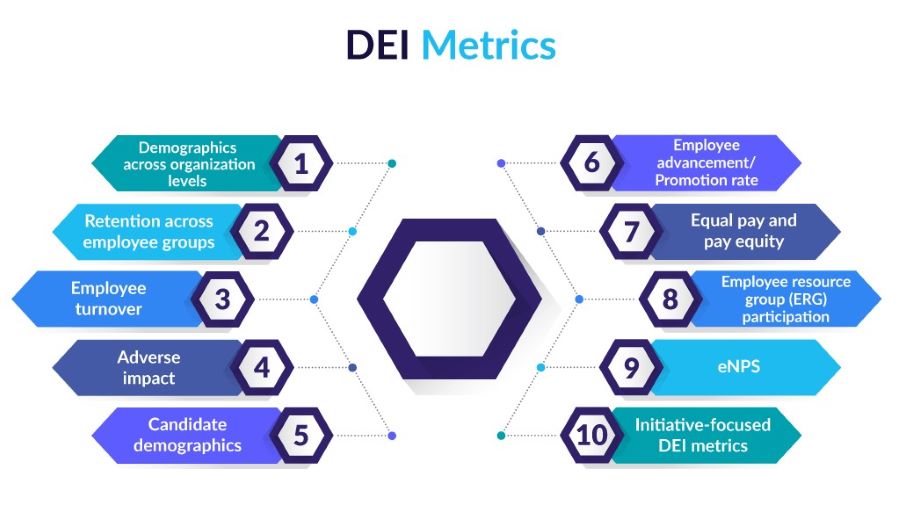Diversity, Equity, and Inclusion (DEI) are essential for creating thriving, inclusive workplaces. But moving beyond Diversity, Equity, and Inclusion as a trend requires deeply integrating these values into every aspect of organizational culture. This guide provides a strategic approach highlighting why DEI is crucial, how to make it actionable, and what meaningful progress looks like.
Why DEI Matters: The Business Case

Implementing a DEI strategy isn’t just a moral imperative; it’s a powerful driver of business success. According to a McKinsey study, companies in the top quartile for ethnic and cultural diversity on executive teams are 36% more likely to outperform on profitability. Meanwhile, organizations with gender-diverse leadership teams have a 21% higher likelihood of above-average profitability. Diverse teams have been shown to outperform homogenous ones by improving problem-solving, creativity, and decision-making, leading to more resilient organizations.
Diverse teams bring in a wider array of ideas, thoughts and perspective. Diverse teams strengthen team work as varied experiences come in handy at different stages.
Step 1: Setting Concrete, Measurable Goals
For a DEI strategy to have an impact, it must start with clear, measurable goals. Microsoft, a leader in DEI, sets annual diversity targets and conducts regular audits to ensure accountability. Organizations should establish metrics such as representation goals across all levels, pay equity assessments, and promotion rates by demographic. According to Gartner, 75% of organizations that establish Diversity, Equity, and Inclusion goals see more significant improvements in workforce diversity and employee satisfaction over time.
Step 2: Embedding DEI in Company Culture
Creating an inclusive environment involves more than hiring diverse talent; it’s about creating an environment where everyone feels they belong. Here are some ways leading companies approach this:
-
Employee Resource Groups (ERGs):
Salesforce, for instance, has implemented ERGs that support communities such as women, veterans, and people of color, fostering both support networks and a sense of belonging. ERGs are shown to boost employee engagement by up to 25% and contribute to professional growth within underrepresented groups.
-
Bias Training and Policy Reviews:
Unconscious bias can hinder DEI efforts if unaddressed. Organizations like Google have implemented comprehensive bias training programs, reducing bias in hiring and promotions. When coupled with policy reviews to ensure equitable practices, such training helps eliminate systemic inequalities and promote fairness.
Step 3: Accountability and Measuring Progress
Ensuring DEI initiatives have a lasting impact requires regular tracking and accountability. DEI dashboards, monthly reports, and public transparency on diversity metrics provide valuable insights and reinforce commitment. Research from Deloitte shows that organizations that publicly share DEI metrics build stronger trust with both employees and customers, resulting in higher engagement and retention rates.
-
Soliciting Feedback:
Encouraging honest feedback from employees helps gauge the DEI climate and identify gaps in strategy. Microsoft, for example, uses employee feedback channels to continuously refine its Diversity, Equity, and Inclusion policies. This approach ensures the organization stays aligned with employees’ needs, leading to higher satisfaction and engagement.
Key Diversity, Equity, and Inclusion Metrics to Monitor

To ensure sustained progress, companies should monitor specific metrics such as:
-
Workforce Representation:
Track diversity across all levels of the organization.
-
Pay Equity:
Conduct regular audits to address pay disparities based on gender or ethnicity.
-
Turnover Rates by Demographic:
A high turnover rate in a specific group may indicate underlying DEI issues.
-
Employee Engagement:
Regular DEI-focused surveys can offer insights into inclusivity perceptions within the company.
Conclusion: Integrating DEI into the Organizational Core
Building a robust DEI strategy means embedding it into the core values and daily operations of the organization. A well-crafted Diversity, Equity, and Inclusion strategy is not just about quotas or compliance; it’s about fostering a workplace where diversity is embraced, equity is ensured, and inclusion is practiced daily. Organizations that commit to DEI not only strengthen their workplace culture but also improve their financial performance and innovation potential. By setting actionable goals, promoting inclusive practices, and maintaining accountability, your organization can create a truly inclusive environment where every employee has the opportunity to succeed and feel valued.
Talent Accelerator’s Total Offer Modeler and Live Benchmarking tool will be helping companies manage pay equity gaps through our unique methodology including access to deep compensation insights.
